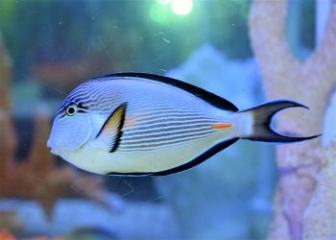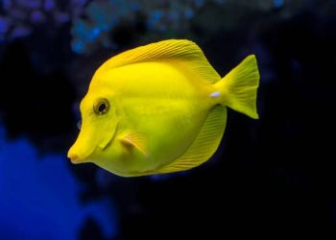Lionfish - Learn about the beautiful but poisonous aquarium fish
Blog | by
Lionfish, a marine ornamental fish with a super impressive appearance, poisonous spines, fast and good reproductive ability, is an invasive species in some seas.
Lionfish , also known as lionfish, is one of the most unique and impressive marine aquarium fish. With its wide-spread fins, colorful colors, graceful swimming, and poisonous spines, this fish attracts the attention of long-time aquarists because it requires highly experienced keepers.
In today's article, with nice fish , let's learn in detail about the origin, habits and care of lionfish so you can grasp this fish species!
Lionfish information :
| Scientific name | Pterois volitans |
| Common name | Lionfish, Lionfish, Scorpionfish, Lionfish |
| Class | Actinopterygii - Ray-finned fishes |
| Set | Scorpaeniformes - Grouper |
| Surname | Scorpaenidae |
| Subfamily | Pteroinae |
| Spend | Pterois |
| Source | Indian Ocean and Pacific Ocean |
| Size | 15 - 38 cm |
| Lifespan | 5 - 15 years |
Origin of Lionfish
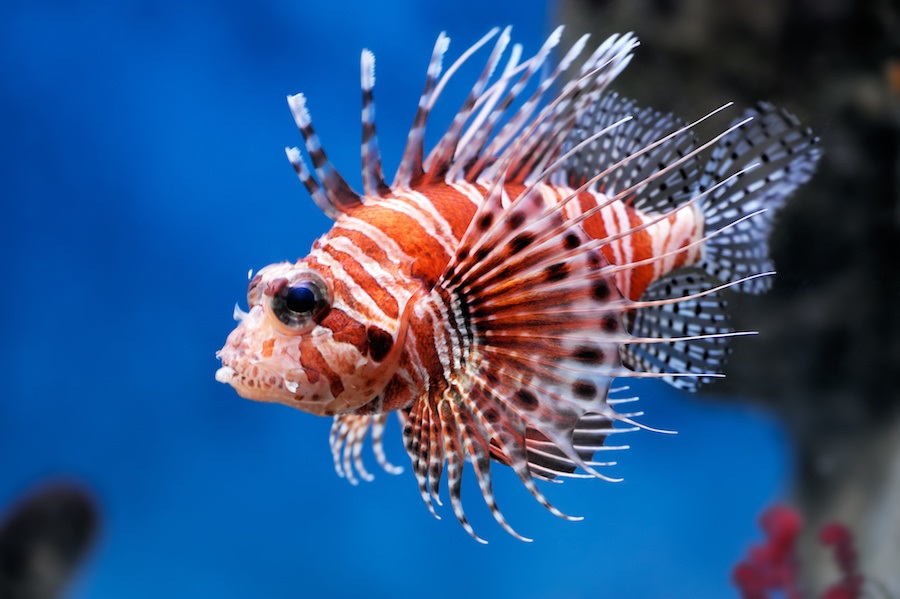
Lionfish, also known as lionfish, is a beautiful, poisonous marine aquarium fish.
Lionfish, also known as lionfish, originates from warm seas in the Indian and Pacific Oceans, specifically:
- Southeast Asian waters Vietnam, Malaysia, Philippines.
- South China Sea, Andaman Sea.
- Sea of Japan.
- Great Barrier Reef in Australia.
- Red Sea and East African waters.
In the natural environment, lionfish often live in coral reefs, rocks or places with many caves at depths of 1 - 100 meters below sea level.
Lionfish have now become an invasive species in the Atlantic Ocean due to humans releasing them into the wild, especially in the Caribbean Sea, Gulf of Mexico,...
Lionfish Appearance
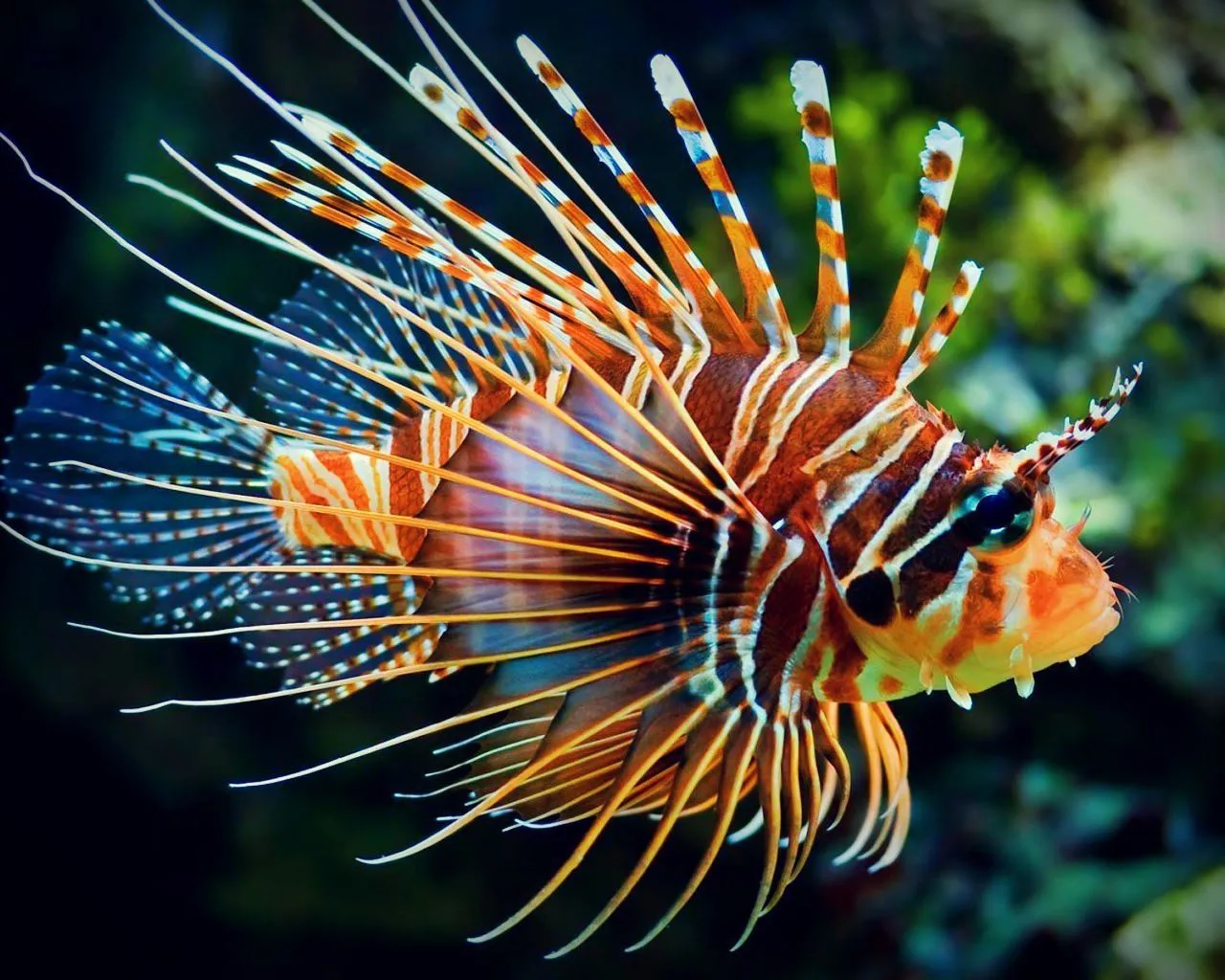
Close-up of the impressive appearance of the lionfish with its fins and sharp spines.
Lionfish are one of the most impressive and recognizable marine aquarium fish. They are also known by the nickname "ocean dancers". Let's learn more about the shape and color of this fish.
- Size : 15 - 38 cm
- Average life span : 5 - 15 years.
- Color : Red, brown, orange or white background, combined with dark symmetrical stripes running along the body, some species also have metallic or purple metallic sheen.
- Pectoral, dorsal and pelvic fins : Elongated like a fan, the fin rays are needle-like and sharp, can be spread out or folded, contain poison.
- Shape : The fish's body is long and slender, its head is slightly large, its eyes are round, its mouth is slightly protruding, and on the top of its head there are skin buds or secondary fins that look like "crests".
- Poisonous spines : Each lionfish usually has 13 - 18 poisonous spines extending from the dorsal and pelvic fins. These spines are mainly used for self-defense, and when stabbed, can cause swelling and pain.
Lionfish behavior
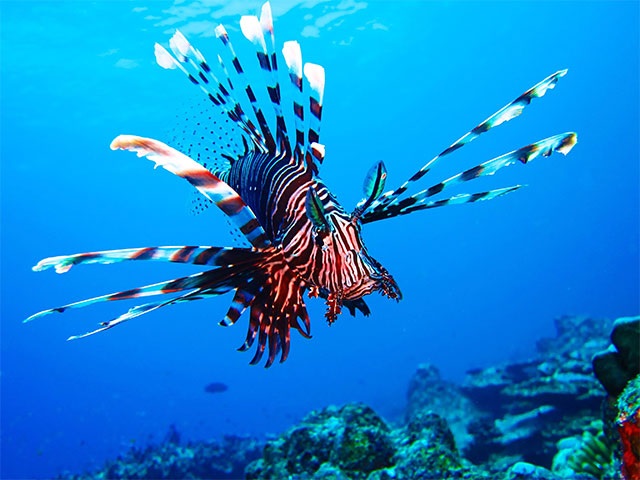
Lionfish prefer to live alone.
Lionfish have many interesting behaviors, from hunting to defense. Let's learn more about these behaviors.
Like to live alone
Lionfish are very cold-blooded, they prefer to live alone, especially when they are adults. They only gather when they are young or when it is breeding season. This fish is also very territorial, always occupying an area of the aquarium for itself.
Nocturnal hunting
Unlike many other marine aquarium fish, lionfish are nocturnal, especially at dusk and dawn. They swim slowly, silently, then suddenly dart out, spreading their pectoral fins to form a "shield" to corner their prey, and they even use their tongues as bait to lure small fish.
Defense with poisonous thorns
Lionfish have many sharp spines containing venom on their dorsal, pectoral and pelvic fins. When attacked or threatened, they will fluff their fins, turn around and raise their sharp spines to "warn" the enemy. They almost only use their sharp spines for self-defense and rarely use them to actively attack other fish.
Fast and strong reproduction rate
Lionfish can reproduce all year round in the natural environment, each time they spawn they can lay from 15,000 to 30,000 eggs, and the total in 1 year can be up to 2 million eggs. After being laid, the eggs will float freely in the seawater and spread everywhere by ocean currents.
Lionfish Breeding Guide - For Professionals
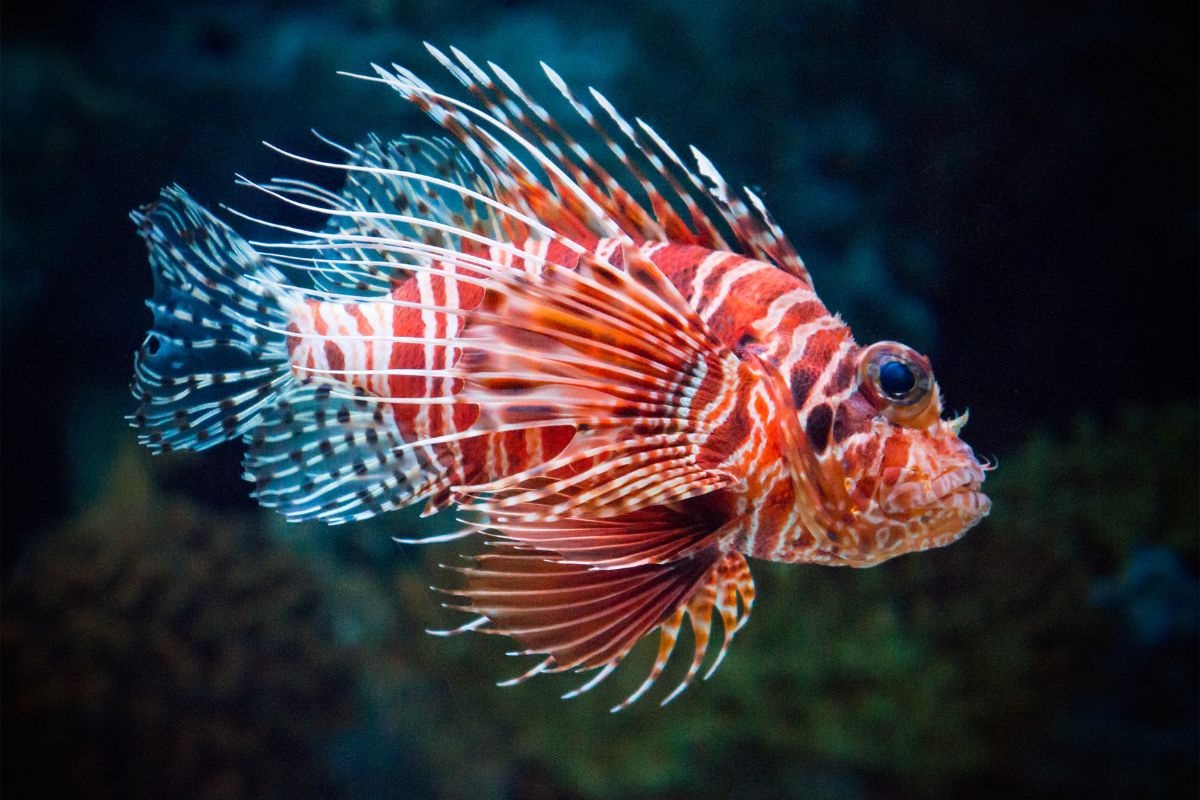
Lionfish are for professional, experienced hobbyists only.
Lionfish - Mao Tien is a type of ornamental fish that is not easy to raise. To raise them, you need to have in-depth knowledge and a stable tank system. Please refer to the detailed instructions below!
Preparing a suitable tank for lionfish
To successfully raise this fish, you need to design a tank with the following criteria:
- Tank capacity : 200 - 300 liters for 1 adult, 400 - 600 liters for a tank of 2 - 3 fish.
- Size : Design a long tank with a wide bottom, not too high because this fish likes to swim and move close to the bottom.
- Filtration system : Overflow filtration + strong biological filtration to help keep water quality stable.
- Skimmer : Required to remove excess protein and organic matter in water.
- Heater + fan : Maintain stable temperature.
- Decoration : Choose live rock, artificial coral reef to provide shelter and create natural microflora in the tank.
- Tank floor : Choose easy-to-clean sand, 2 - 3 cm thick
- Aquarium LED lights : Should have to help fish color more beautifully.
Water parameters suitable for Lionfish
Below are the water parameters suitable for the requirements to raise lionfish at home or in a professional tank. Please refer to them for more information.
- Temperature : 25 - 27 degrees Celsius
- Salinity : 1.022 - 1.025 SG
- pH : 8.1 - 8.3
- Ammonia, Nitrite : 0 ppm
- Dissolved oxygen : High. above 6.5 mg/L
- Change water regularly : Change 10 - 20% of water in the tank every week.
What do lionfish eat?
In artificial aquarium conditions, lionfish can eat the following foods:
- Small fish: Live or frozen bait fish.
- Shrimp: Peeled.
- Squid: Fresh or frozen.
- Fish meat: Pre-processed, deboned, chopped, should choose healthy sea fish.
Frequency and method of feeding fish :
- Fish should be fed 2-3 times/week with just enough food to fill them up, avoiding excess.
- When feeding, use long tweezers or bait wire, avoid feeding fish with bare hands to limit being pricked by poisonous spines.
Health care, disease prevention and treatment for lionfish
Below are instructions on disease prevention and treatment when lionfish show unusual signs. Please refer to them for better fish care knowledge.
Disease prevention :
- Newly purchased fish need to be quarantined for 10 - 14 days before being released into the tank.
- Observe fish daily to detect early signs of abnormalities such as fish not eating, loss of color, lethargy, etc.
- Bathe fish with diluted salt water periodically for 5 - 10 minutes to remove parasites.
How to treat when fish show abnormal signs :
| Sick | Token | How to handle |
| Skin fungus |
Fish appear white streaks, slimy, slimy The fish is lethargic and swims unsteadily. |
Isolate sick fish Slight increase in temperature. Bathe fish with diluted salt water Use fish fungus medicine. |
| Enteritis | Fish stop eating, abnormally swollen belly |
Stop feeding fish for 4 - 5 days Use mild antibiotics specifically for fish. |
| Fin damage | Fins torn, fins folded, not spread |
Change the tank water, ensure stable water quality. Supplement vitamin C in fish food. |
Ensuring safety for lionfish keepers
As you know, lionfish have sharp spines that contain toxins, so you need to understand safety skills to avoid risks in the process of caring for this fish species.
- Identifying poisonous spines: Lionfish have poisonous spines on their dorsal, anal and pelvic fins.
- Symptoms of poisoning : Severe pain, swelling, and even mild shock and infection if not properly cared for and treated.
- Use safe tools when handling fish : When feeding fish, use long tweezers, fishing line to hang bait, when cleaning the tank, use anti-stab gloves, when moving fish, use net, plastic box,...
- Initial treatment when stung by a fish : Clean the wound with diluted salt water, soak the wound in hot water at 40 - 45 degrees Celsius for 1 - 2 hours, use pain relievers and anti-inflammatory drugs. If the wound is more serious, go to a medical facility for treatment.
- Warning Labels : "Poisonous Spiny Fish" warning labels are required for public aquariums.
The impact of lionfish on the marine environment
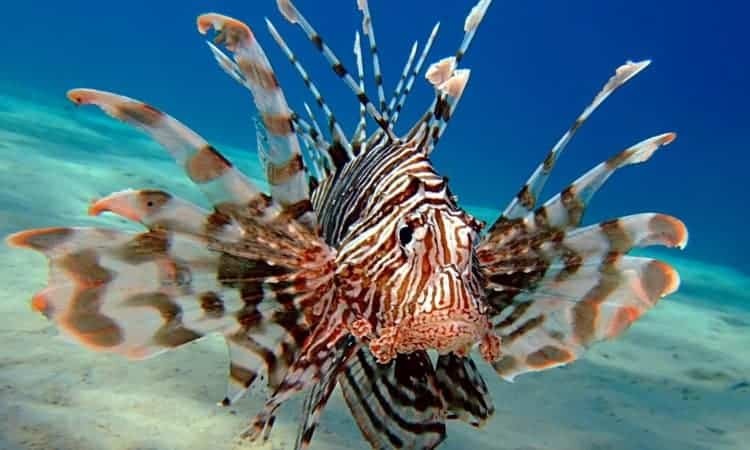
Lionfish are now an invasive species in some marine areas.
Today, outside the Indian and Pacific Oceans, lionfish have become an invasive species that seriously harms marine ecosystems for a number of reasons:
- No natural enemies: Lionfish have venomous spines so they have virtually no natural enemies.
- Terrifying reproductive rate: A female lionfish can produce more than 2 million eggs in a year, which will be spread throughout the seas by ocean currents.
- Omnivorous and strong predatory instincts: Lionfish can eat almost 100% of the small creatures present in the coral reef, and according to research, an adult individual is capable of reducing 80% of the juvenile fish in a given area in a short period of time.
Dangerous consequences of lionfish on the marine environment :
- Reduces biodiversity by eating many small fish in coral reefs.
- They upset the food chain by eating algae-eating fish, causing algae to grow excessively.
- Reduced coral reef resilience due to loss of natural cleaner fish.
Lionfish price list
Currently, the price of lionfish varies depending on the species, origin, color and store. Right below, we have compiled the latest lionfish price list, please refer to it.
| Lionfish | Reference price (VND/piece) |
| Lionfish are usually 8 - 12 cm in size. | 400,000 - 650,000 |
| Dwarf Lionfish | 500,000 - 800,000 |
| Zebra Lionfish | 600,000 - 950,000 |
| Imported lionfish | Price increased by 20 - 30% compared to domestic products |
Questions and answers about lionfish?
Are lionfish poisonous? Are they dangerous to humans?
This fish is poisonous, when stung it will cause a sharp pain, nausea, swelling, dizziness, although not fatal but also affects health if not handled properly.
Can lionfish be kept with other fish species?
Lionfish can be kept with larger, non-aggressive fish such as surgeonfish, sea angelfish, etc.
Beautiful Lionfish Pictures
We invite you to explore the collection of the most beautiful and unique lionfish images swimming freely in the vast ocean shared below!

A lionfish is swimming happily under the clear blue water.
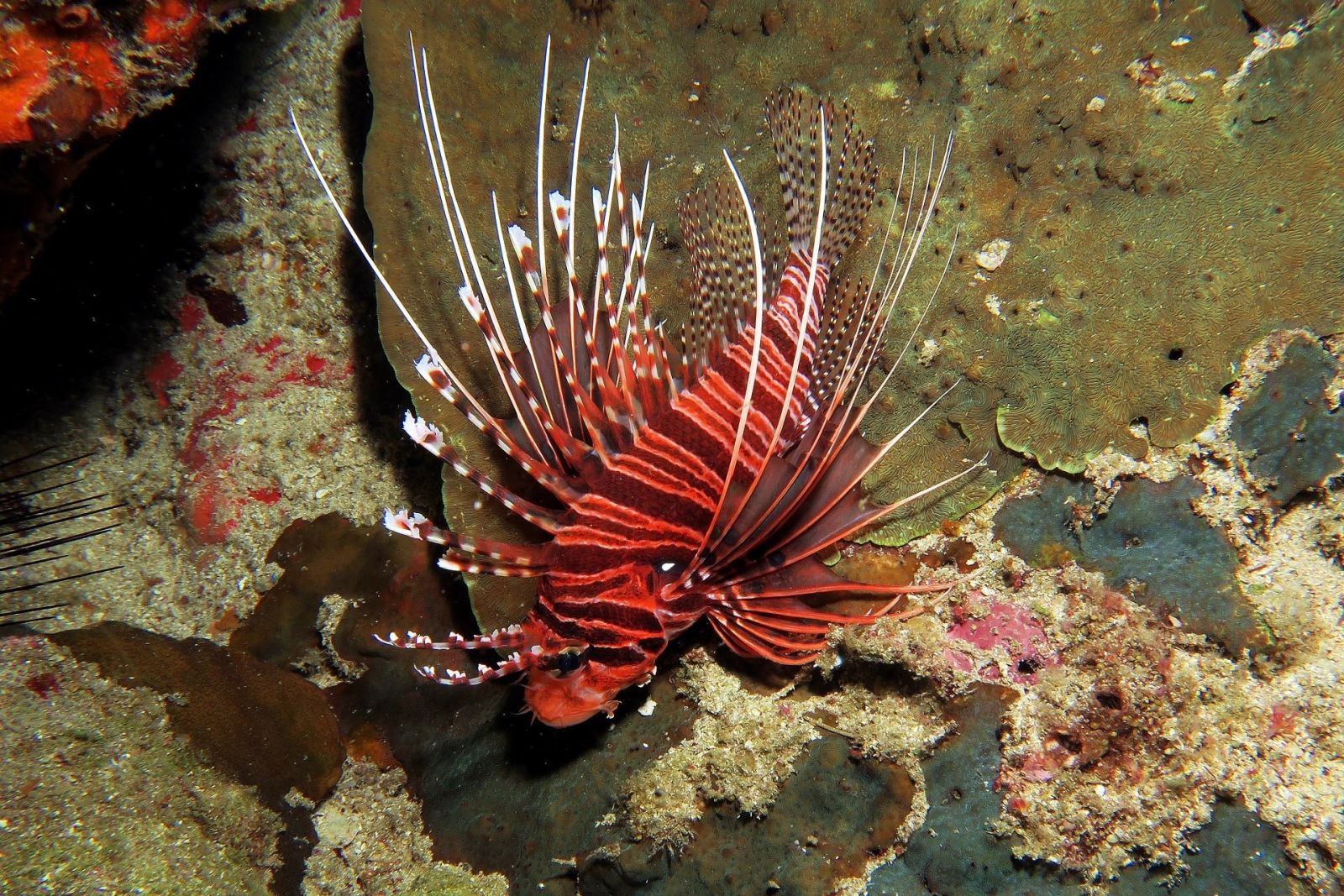
Lionfish image from above.
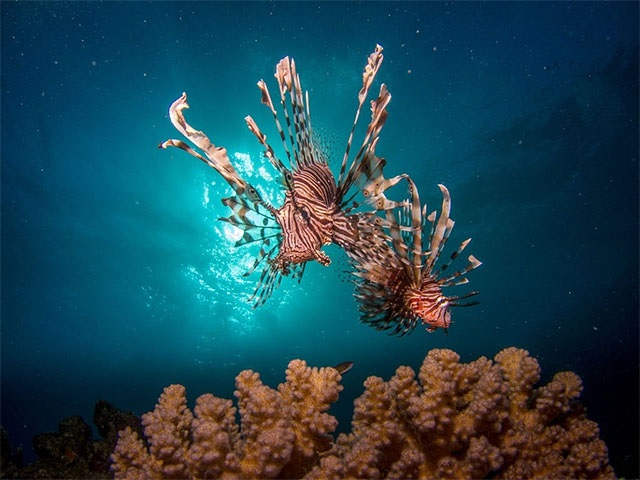
A pair of lionfish swimming side by side.

A lionfish is opening its mouth wide to catch its prey.
Thus, through the article that nicefish.net shared above, we can see that lionfish or lionfish is an ornamental fish with a unique and impressive appearance, but also requires experience and caution when raising because it contains poisonous spines.
If you are passionate about beautiful aquarium fish, don't miss our Blog section, there are many different fish species waiting for you to discover!
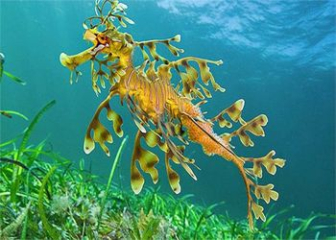
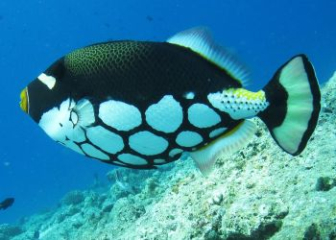
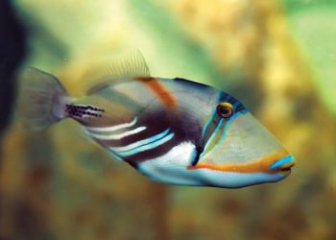
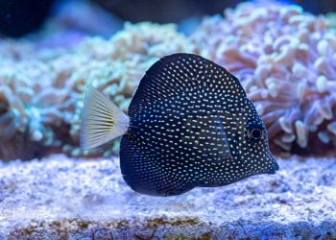
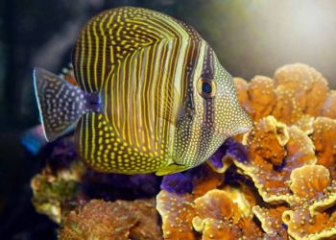
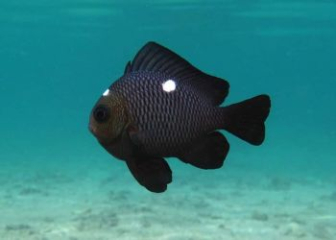
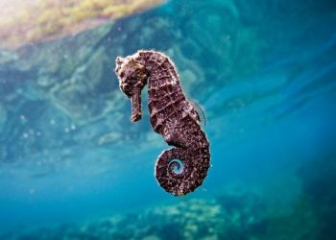





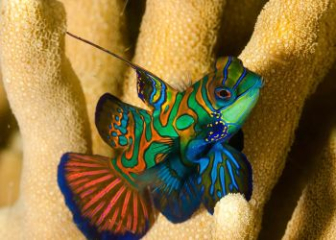

_350x250.jpg)


